#3E-Marketing
Text
0 notes
Text
Again, not an exhaustive list but for anyone else in the UK, these are where riots are expected today:
Aldershot - Immigration Advisors at 40 Victoria Road GU11 1TH, starting at 19:30.
Bedford - Immigration INN (Inn?) on Ford End Road MK40 4JT, at 20:00.
Birmingham - Refugee and Migrant Centre on Frederick Street B1 3HN, beginning at 20:00.
Bishop Auckland - outside the Town Hall on Market Place DL14 7NP.
Blackburn - Rafiq Immigration Services on Whalley Road BB5 1AA, at 20:00.
Blackpool - Immigration Solicitors at the Enterprise Centre on Lytham Road FY1 1EW, starting at 20:00.
Bolton - Deane & Bolton Immigration Lawyers on Chorley New Road BL1 4QR, at 20:00.
Brentford - UK Immigration Help in The Mile on 1000 Great West Road TW8 9DW, starting around 19:00.
Brighton - Raj Rayan Immigration in Queensberry House at 106 Queens Road BN1 3XF, starting either at 19:30 or 20:00.
Bristol - Gya Williams Immigration on West Street BS2 OBL, at 20:00.
Burnley - at Thompson Park on 111 Ormerod Rioad BB11 3QWat, starting at 13:00.
Canterbury - UK Immigration Clinic in the Canterbury Innovation Centre CT2 7FG, at 20:00.
Chatham - Immigration Status UK on Maidstone Road ME5 9FD, at 20:00.
Cheadle - Intime Immigration Services on Brooks Drive SK8 3TD, at 20:00.
Chelmsford - UK Immigration Information Centre on Violet Close CM1 6XG, at 20:00.
Derby - Immigration Advisory Service, Normanton Road DE23 6US, at 20:00.
Dover - Kent Immigration and Visa Advice at 5A Castle Hill Road CT16 1QG, reportedly around 20:00.
Durham - in Crook at Market Place, at 18:00. (Unsure as to whether this is the same one as in Bishop Auckland as I know Crook is near there?)
Finchley - Immigration and Nationality Services within Foundation House at 4 Percy Road N128BU, around 19:00.
Harrow - Yes UK Immigration and North Harrow Community Library within the Business Centre at 429-433 Pinner Road HA1 4HN, in North Harrow, at 19:00.
Hastings - Black Rock Immigration at 37 Cambridge Gardens TN34 1EN, at 20:00.
Hull - Conroy Baker Immigration Lawyer in Norwich House, 1 Savile Street HU1 3ES, at 20:00.
Lewisham - the Clock Tower, SE13 5JH, 19:00.
Lincoln - Immigration Lawyer Services on Carlton Mews LN2 4FJ, at 20:00.
Liverpool - Merseyside Refugee Centre in St Anne's Centre on 7 Overbury Street L7 3HJ, at 20:00.
Liverpool - Sandpiper Hotel (might be on Ormskirk Old Road? if any scousers can clarify where that is, that'd be great) at 13:00.
Middlesbrough - Immigration Advice Centre which is the Co-Operative Buildings at 251 Linthorpe Road TS1 4AT, at 20:00.
Newcastle - United Immigration Services in Artisan Unit 3, The Beacon on Westgate Road NE4 9PQ, at 20:00.
Northampton - Zenith Immigration Lawyers at 2 Talbot Road NN1 4JB, starting at 20:00.
Nottingham - East Midlands Immigration Services at 15 Stonesbury Vale NG2 7UR, at 20:00.
Oldham - somewhere on Ellen Street 0L9 6QR, at 20:00
Oxford - Asylum Welcome in Unit 7 in Newtec Place on Magdelen Road OX4 1RE, around 19:00. [Updated as of 15:53]
Peterborough - Smart Immigration Services in Laxton House at 191 Lincoln Road PE1 2PN, at 20:00.
Plymouth - in a Morrisons car park, I don't know which but I saw Victory Parade associated with it? If anyone from Plymouth can clarify, please do. Not sure on time.
Portsmouth - UK Border Agency at Kettering Terrace PO2 8QN, at 20:00
Preston - Adriana Immigration Services at 109 Church Street PR1 3BS, at 19:00 or 20:00.
Rotherham - Parker Rhodes Hickmotts, The Point S60 1BP, at 20:00.
Sheffield - City Hall on Barker's Pool S1 2JA, at 13:00.
Sheffield - White Rose Visas at 101 Wilkinson Street S10 2GJ, at 20:00.
Southampton - Y-Axis Immigration Consultants, Cumberland Place on Grosvenor Square SO15 2BG, at 20:00.
Southend - MNS Immigration Solicitors on Ditton Court Road SS0 7HG, at 20:00.
Stoke-On-Trent - ZR Visas on Metcalfe Road ST6 7AZ, in Tunstall, at 20:00.
Sunderland - North of England Refugee Service which is in Suite 12 in the Eagle Building at 201 High Street East SR1 2AX, at 20:00.
Swindon - I have no details for this, just seen that something might be kicking off there.
Tamworth - Lawrencia & Co Immigration Solicitors within the Amber Business Village on Amber Close B77 4RP, no details on time unfortunately.
Walthamstow - Waltham Forest Immigration Bureau at 187 Hoe Street E17 3AP, at 20:00.
Wigan - Support for Wigan Arrivals Project, Penson Street WN1 2LP, at 20:00.
York - only detail I've got it is York Stay City Hotel.
#england#england riots#uk#uk riots#britain#britain riots#uk politics#ukpol#signal boost#important#york#wigan#tamworth#aldershot#walthamstow#stoke-on-trent#sheffield#portsmouth#sunderland#kettering#plymouth#liverpool#lincoln#lewisham#derby#brighton#harrow#finchley#durham#cheadle
434 notes
·
View notes
Text
realities, maximalism,and the need for big book™️
some gubat banwa design thoughts vomit: since the beginning of its development i've kind of been enraptured with trying to really go for "fiction-first" storytelling because PbtA games really are peak roleplaying for me, but as i wrote and realized that a lot of "fiction first" doesn't work without a proper sort of fictional foundation that everyone agrees on. this is good: this is why there are grounding principles, genre pillars, and other such things in many PbtA games--to guide that.

broken worlds is one of my favs bc of sheer vibes
Gubat Banwa didn't have much in that sense: sure, I use wuxia and xianxia as kind of guideposts, but they're not foundational, they're not pillars of the kind of fiction Gubat Banwa wants to raise up. there wasn't a lot in the sense of genre emulation or in the sense of grounding principles because so much of Gubat Banwa is built on stuff most TTRPG players haven't heard about. hell, it's stuff squirreled away in still being researched academic and anthropological circles, and thanks to the violence of colonialism, even fellow filipinos and seasians don't know about them
this is what brought me back to my ancient hyperfixations, the worlds of Exalted, Glorantha, Artesia, Fading Suns... all of them have these huge tomes of books that existed to put down this vast sprawling fantasy world, right? on top of that are the D&D campaign settings, the Dark Suns and the Eberrons. they were preoccupied in putting down setting, giving ways for people to interact with the world, and making the world alive as much as possible.
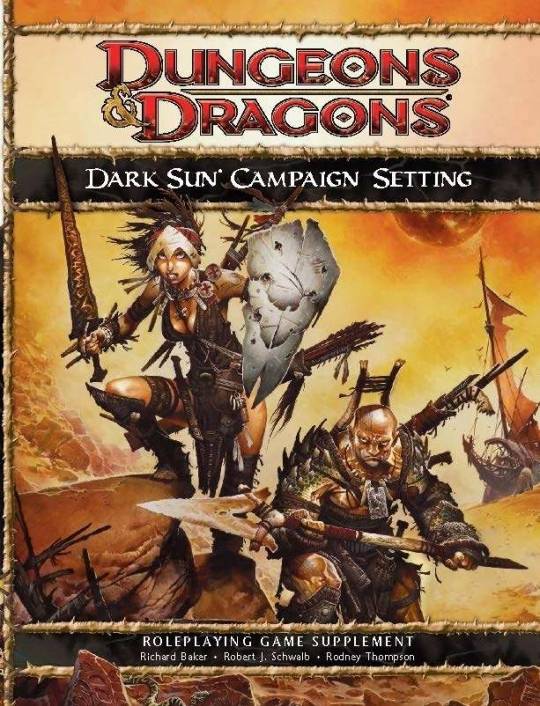



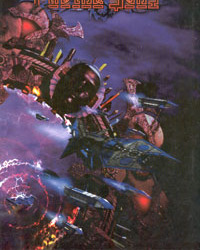
one of my main problems with gubat banwa was trying to convey this world that i've seen, glimpsed, dreamed of. this martial fantasy world of rajas and lakans, sailendras and tuns, satariyas and senapatis and panglimas and laksamanas and pandai... its a world that didn't really exist yet, and most references are steeped in either nationalism or lack of resources (slowly changing, now)

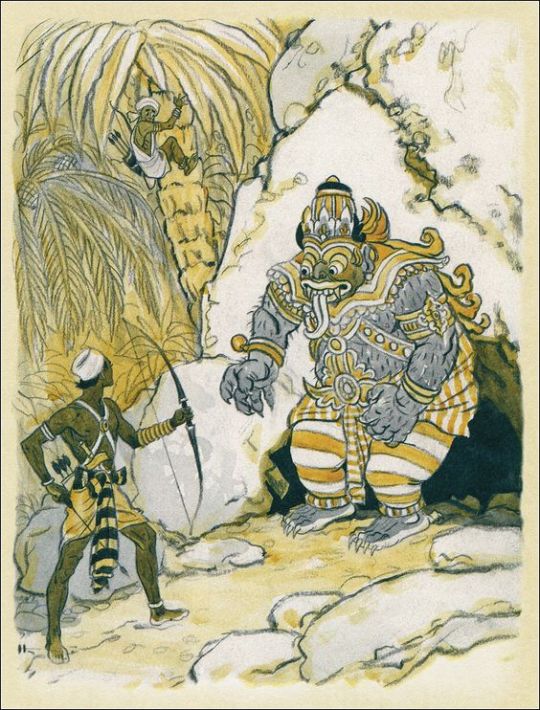
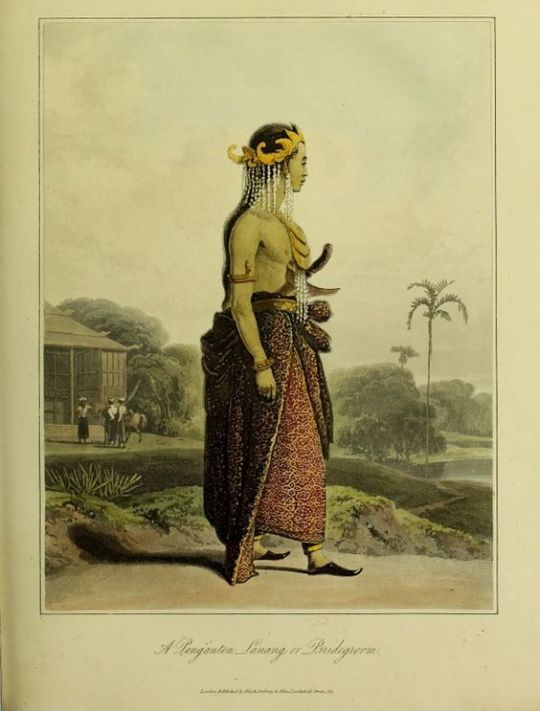
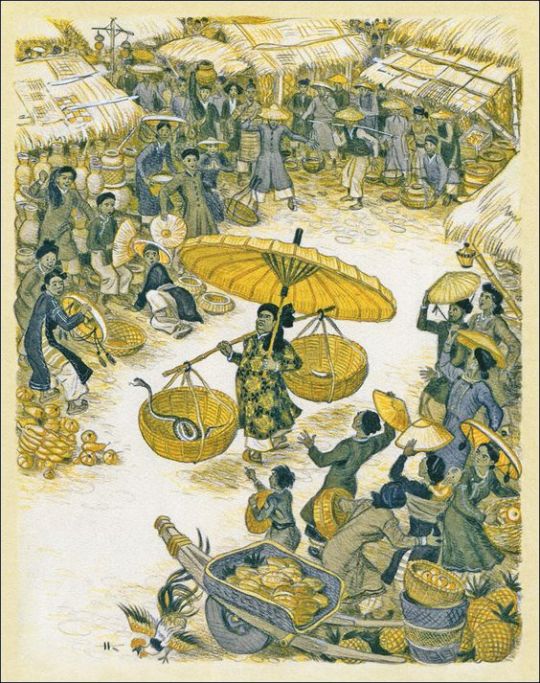
i didn't want to fall back into the whole gazeteer tourist kind of shit when it came to writing GB, but it necessitated that the primary guidelines of Gubat Banwa were set down. my approach to it was trying to instill every aspect of the text, from the systems to the fluff text to the way i wrote to the way things were phrased, with the essence of this world i'm trying to put forward. while i wrote GB mainly for me and fellow SEAsian people, economically my main market were those in the first world countries that could afford to buy the book. grokking the book was always going to be severely difficult for someone that didn't have similar cultures, or are uninterested in the complexities of human culture. thus why GB had to be a big book.
in contemporary indie ttrpg spaces (where I mostly float in, though i must admit i pay more attention to SEAsia spaces than the usual US spaces) the common opinion is that big books like Exalted 3e are old hat, or are somewhat inferior to games that can cram their text into short books. i used to be part of that camp--in capitalism, i never have enough time, after all. however, the books that do go big, that have no choice to go big, like Lancer RPG, Runequest, Mage, Exalted are usually the ones that have something really big it needs to tell you, and they might be able to perform the same amount of text-efficient bursting at the seams flavor writing but its still not enough.
thats what happened to GB, which I wanted to be, essentially, a PbtA+4e kind of experience, mechanically speaking. i very soon abandoned those titles when i delved deeper into research, incorporated actual 15th century divination tools in the mechanics, injected everything with Martial Arts flavor as we found our niche
all of this preamble to say that no matter how light i wanted to go with the game, i couldnt go too light or else people won't get it, or i might end up writing 1000 page long tome books explaining every detail of the setting so people get it right. this is why i went heavy on the vibes: its a ttrpg after all. its never gonna be finished.
i couldnt go too light because Gubat Banwa inherently exists on a different reality. think: to many 3 meals a day is the norm and the reality. you have to eat 3 meals a day to function properly. but this might just be a cultural norm of the majority culture, eventually co opted by capitalism to make it so that it can keep selling you things that are "breakfast food" or "dinner food" and whatnot. so its reality to some, while its not reality to others. of course, a lot of this reality-talk pertains mostly to social--there is often a singular shared physical reality we can usually experience*
Gubat Banwa has a different fabric of reality. it inherently has a different flow of things. water doesn't go down because of gravity, but because of the gods that make it move, for example. bad things happen to you because you weren't pious or you didn't do your rituals enough and now your whole community has to suffer. atoms aren't a thing in gb, thermodynamics isn't a real thing. the Laws of Gubat Banwa aren't these physical empirical things but these karmic consequent things
much of the fiction-first movement has a sort of "follow your common sense" mood to it. common sense (something also debatable among philosophers but i dont want to get into that) is mostly however tied to our physical and social realities. but GB is a fantasy world that inherently doesn't center those realities, it centers realities found in myth epics and folk tales and the margins of colonized "civilization", where lightnings can be summoned by oils and you will always get lost in the woods because you don't belong there.
so Gubat Banwa does almost triple duty: it must establish the world, it must establish the intended fiction that arises from that world, and then it must grant ways to enforce that fiction to retain immersion--these three are important to GB's game design because I believe that that game--if it is to not be a settler tourist bonanza--must force the player to contend with it and play with it within its own terms and its own rules. for SEAsians, there's not a lot of friction: we lived these terms and rules forever. don't whistle at night on a thursday, don't eat meat on Good Friday, clap your hands thrice after lighting an incense stick, don't make loud noise in the forests. we're born into that [social] reality
this is why fantasy is so important to me, it allows us to imagine a different reality. the reality (most of us) know right now (i say most of us because the reality in the provinces, the mountains, they're kinda different) is inherently informed by capitalist structures. many people that are angry at capitalist structures cannot fathom a world outside capitalist structures, there are even some leftists and communists that approach leftism and revolution through capitalism, which is inherently destructive (its what leads to reactionaries and liberalism after all). fantasy requires that you imagine something outside of right now. in essence read Ursula K Le Guin
i tweeted out recently that you could pretty easily play 15-16th century Luzon or Visayas with an OSR mechanic setting and William Henry Scott's BARANGAY: SIXTEENTH CENTURY PHILIPPINE CULTURE AND SOCIETY, and I think that's purely because barebones OSR mechanics stuff fits well with the raiding and adventuring that many did in 15-16th century Luzon/Visayas, but a lot of the mechanics wont be comign from OSR, but from Barangay, where you learn about the complicated marriage customs, the debt mechanics, the social classes and stratum...
so thats why GB needs to be a (relatively) big book, and why I can contend that some books need to be big as well--even if their mechanics are relatively easy and dont need more than that, the book, the game, might be trying to relay something even more, might be trying to convey something even more than that. artesia, for example, has its advancements inherently tied to its Tarot Cards, enforcing that the Arcana guides your destiny. runquest has its runes magic, mythras (which is kinda generic) has pretty specific kinds of magic systems that immediately inform the setting. this is why everything is informed by something (this is a common Buddhist principle, dependent arising). even the most generic D&D OSR game will have the trappings of the culture and norms of the one that wrote and worked on it. its written from their reality which might not necessarily be the one others experience. that's what lived experience is, after all
*live in the provinces for a while and you'll doubt this too!
385 notes
·
View notes
Text
3e: Psychofeedback
In game making we’re often talking about feedback loops. That is the idea that when something happens, in a process, it influences that same process the next time it happens. Feedback in audio is a problem you want to avoid. Feedback in marketing is something you want endlessly so you can always make a new excuse for why you need more feedback before committing to an optimal strategy. Feedback is everywhere in every interaction because if you weren’t getting feedback, you weren’t interacting.
TTRPGs are in many cases built on feedback. In most story-run games, ie, anything with what we call a DM or GM interchangeably unless you’re really persnickety about rules language, the game is fundamentally a feedback loop where that story-runner provides a stimulis and the players respond to and incorporate that feedback. Feedback is not a problem, feedback is the whole experience.
Art Source
That’s not what this is about.
This is about a single specific power in 3e D&D, called Psychofeedback, which was so broken I may have gotten it errata’d.
The rules system is 3rd edition Dungeons & Dragons. The book is Advanced Dungeons & Dragons Psionics Handbook by Bruce Cordell and I assume a lot of other people. In this book, we have the power Psychofeedback, and since you’re not in a position to get this book, here’s the relevant rules text, verbatim:
You can use power points to boost your Strength, Dexterity, and Constitution modifiers as a free action. While the duration lasts, you can use power points on a round-by-round basis to boost any or all of your ability score modifiers (not the actual ability score) by a number equal to half the power points you expend for that round as a free action. For example, you can boost your Strength modifier by as much as 8 points (if you spend 16 power points).
That’s the important rules information. It lets you convert psionic power points to stat modifier at a 2:1 rate. Note that it’s not converting to stat points, but to stat modifier. Now, this means you don’t change things like your strength score (relevant for carrying capacity) but your strength modifier (relevant for single acts of strength like breaking objects or attacking people). This was a level 4 power, available for a Psion at level 8, or Psychic Warrior at level 10. It was also, largely, a completely unusable power, as designed, because the conversion rate didn’t really work out very well. It could be useful for a short burst of strength, but you couldn’t, for example, use it to temporarily inflate your hit points, because when your Constitution decreased, you’d lose those hit points you gained first. You could ge tougher, but you’d have to stay spending power points until you were healed. Neat effect but not amazing.
Interesting power, no real application.
Except.
In the same book we have the Mind Feeder weapon property. By level 8-10, it’s very reasonable to expect a character to have access to this weapon, whose rules state:
A mindfeeder weapon grants its wielder temporary power points equal to the total damage dealt by a successful critical hit.
How often do you get critical hits?
In this case, using core rules available items, a scimitar crits on 3 numbers (18, 19, 20). With improved critical, it crits on 6 numbers (adding 15, 16, 17). With Sharpness, it crits on 8 numbers (adding 14 and 13). That means that a mindfeeder weapon could critically hit just under half the time. What this could lead to was a character who dual-wielded small weapons like these and made five attacks a turn at level 10 (because of ubiquitous buff haste).
You can open with a Psychofeedback buff to your attack of, at that level, 26 power points, all you had. That means +13 to your strength modifier, meaning your attack would do something in the district of 1d4+your strength+magical mods+that extra 13 strength. There’s also this feat from the Player’s Handbook called power attack. Power attack let you exchange a penalty on hit for a bonus to your damage rolls. Remember how you spent those 26 power points for a +13 strength modifier? You have therefore, a +13 extra to hit. So without needing to change how likely you are to hit, you’re suddenly getting another +13 extra damage on that attack.
Now double it.
That meant that your first crit, which cost you 26 power points, is going to be like 2.5 dice-roll damage, +1 from the magical weapon, probably, +2 from a totally reasonable base strength mod, +13 from the new strength mod, +13 from power attack, doubled. That’s 63 power points. The next turn, you can turn those 63 power points into strength, for a +31 strength mod. Critting in that turn on five attacks is very reasonably likely, and that gets you 135 power points back. And that’s +67 Strength modifier. That would be equivalent to a strength of 145. While this is going on, your character is stronger than multiple gods of strength, combined.
You have ten rounds to do this, and every single high roll pushes you further ahead. And this is the thing at start; you don’t need to go much further for the wheels to come off this very fast. And this is level ten where you don’t have a lot of ways to build for ridiculous recovery, or forcing more chances to critically hit. Remember, this is a game system that’s meant to scale up past level 20 infinitely!
This is dumb. It’s also 3rd edition so you can even be mobile and do this, haste letting you make a partial charge to close on a new subject and then ginsu it with your full attack. But hey, at least those power points are temporary, so you can’t just spend all your time doing this in every encounter, right? At least you’re not ending every fight on full power points, after having a strength stat somewhere in the triple digits at some point, Right?
Art Source
Normally with these balance problems in the sprawling game system that is Dungeons & Dragons the problem is the intersection of systemic components that were not designed to necessarily know about one another. It’s usually about using parts from two different books, brought together in a way that resulted in something unintentionally powerful. This is different. This is using two things from the same book whose application to one another seems to be pretty reasonably obvious. This is almost as egregious as the problem of the Spelldancer, another 3e all-star with an internal feedback loop that worked with its own features in the most obvious way.
See, the thing is, now Psychofeedback says ‘temporary’ power points. When the book was new, it didn’t say temporary. It didn’t say that and I wrote a treatment on it for the Character Optimisation board showing how the whole thing broke with core material only, and then one of the website writers for the book showed up in the thread and said ‘oh, that shouldn’t work that way.’
Then we got an online errata for the rulebook, and then in the next edition of the book the rule was changed.
Check it out on PRESS.exe to see it with images and links!
46 notes
·
View notes
Note
What are your thoughts on Pathfinder as an rpg system? I've been trying to transition away from 5e and wonder what you think about it and Paizo as a whole.
I think Pathfinder 2e seems pretty great although I haven't had a chance to play it. It sits in a similar niche with D&D 5e which is relatively high crunch fantasy adventure games where fun combat and character optimization are the main venues of player expression, but Pathfinder 2e just has a lot of polish and care put into it. I'm generally not in the market for one of those games right now, but like it I had to pick one right now I'd probably pick Pathfinder 2e. Character creation looks like a fun minigame and there are so many options.
And it's pretty great because I conversely had a very low opinion of Pathfinder 1e, because even though it was presented as a continuation of D&D 3e's legacy in many ways it doubled down on the worst design trends of D&D 3e, so Pathfinder 2e did a really good job of turning it around.
35 notes
·
View notes
Note
How to Karlach's and Tav's tail lengths and width compare? Are they the same, if one shorter/longer, is one thicker/thinner, do they have any scars etc :)

They both have pretty average tails overall - the length of their outseam plus about a foot or so - which for both of them is quite long. While I know Karlach shares the in-game model height with the tall fem tief of about 6', in my heart (and drawings) she is the same as her character brief of 7' (putting Zatavia at 6'9".) Tav's tail is a little longer than Karlach's, tapering to a thinner tip because she doesn't have the same skin webbing that Karlach does, and she just has a lighter build overall. Karlach's tail tip is more typical in shape - although Tav's tail isn't unusual in that regard - it's like having an attached or detached earlobe.

How I, personally, think BG3 tief tails work, with the caveat that I'm of the opinion that tiefs should still be able to be weird as hell despite Hasbro standardizing them a lot for marketability (compare 3e to 5e). You'll sometimes see cartilage on both sides (for a more classic devil 'point') and more variation on proportion of skin, making for heart or club shaped tail tips too. Similarly you might more rarely see bifurcation, or multiple cartilage ridges. I think of their tails as being about as dexterous and strong as a pinky finger - able to wrap around things and hold them, but not strong enough to pick up heavy things, hold their whole body, wield a weapon, or do fine, detailed work unless specifically trained for. With minimal fat distribution the tail tends to be the one of the last places on the body to show significant weight gain or loss.
Karlach's tail has scars in similar proportion to the rest of her body - lots of old, well-healed cuts and scratches, but nothing exceptional. Some probably have stories attached, others are just in the milieu of 'was fighting in hell for 10 years straight after being a bodyguard and a rambunctious kid.' Nothing particularly stands out as exceptionally bad.

Tav is similar, though less scarred overall, with markers of 25 years traveling as a wandering monk after 10 years of monastery training and a similarly active childhood. The one significant one is that she's missing the very tip of the hook of her tail - which she accidentally bit off as a toddler. She had gotten into a fight with it, as kids do, and the tail lost. Her poor mum came home to a bloody kitchen, husband, and daughter, although Tav was easily soothed after the initial shock and flailing. There was a surprisingly large amount of cleanup - tail wounds bleed like a bitch.
I know I draw them all over the place but this is because I operate on a principle called vibes, but that's my personal feelings on size and shape and such!
#BG3#baulders gate 3#Kalrach#Tav#Zatavia#Ask#Thank you for asking I love stuff like this#Art#Personal#Sketch#Tail#Tiefling
20 notes
·
View notes
Note
how do I make money in FL? I want to buy all the fancy clothing but I don't want to sell all my stuff for it
I think I'm midgame???? Like I just got to the tigers but I don't think doing the orphans thing you were doing is very profitable? like you get 25 tribute for one.
648e (10 orphans) yields 250 tribute (781e) for 62.5 actions plus travel.
(781-684)/1.552 echo with every action, which is worse then doing the Underclay (around 3e per action with three actions that give nothing on each cycle)
Am I missing something???? I need money
well first of all i am, infamously, the worst person ever at making bank in niche video games, so take note of that!
wwwwwwwwwwhich is exactly why i highly advise you to check the wiki's multiple dedicated money making guides, which can all probably tell you infinitely more than me and my horrendous optimization ever could. this is, like, the one area of FL i honestly probably can't help y'all with. im just as bad at it as you are.
that being said, there are a few notable ways that may-or-may-not be open to you. having a tier 3 profession will give you access to professional activities that can go for a whopping 4.30 EPA, and if you're willing to juggle the very complicated process that is the nadir you can get an average of 5.7 EPA in the long-term. godfall is also deceptively profitable, giving a range of 3.56 to 4.88 depending on what options you take. if you've got access to the bone market, make sure to take full advantage of it. a licentiate trading in victim skeletons can make surprisingly good bang for their buck.
the underclay is also, unfortunately, profitable. i think. maybe. possibly??
...like i said, im infamously bad at making money, so take my suggestions with a grain of salt. you might need to outsource this conundrum to someone else.
#ask#fallen london#not even i will let anyone forget the shame of that ak base#also a small correction:#what i was doing was WORSE than the orphans! i was doing the tigers while grinding poet laureate!#back when that took like. 30 points per carnelian work#for 5 tiger rep#everytime.#i did that. casually. unironically. i never once brought any orphans.#i cannot stress enough how horrendous my moneymaking skills have turned out to be
14 notes
·
View notes
Text
okay here's my hot take: D&D is a game about dungeons not the hero's journey.
Mechanically, it's about dungeons. This has been true from the very beginning, and remains true, regardless of what WotC says in their marketing. The culture can shift, and the goals and expectations players have when they gather a group and sit down to play can be anything under the sun and that's good, that's great, I want people to have fun!
None of this changes the fact that the rules of the game are designed to facilitate combat encounters (and traps and riddles and puzzles and such that you would find in a classic rpg dungeon). And it's not really a rules-light system in the first place ("smh noob, 5e has nothing on 2e with THAC0-" shhh, its okay. take my hand. let's make space vehicles in GURPS 3e together.), people just have a level of cultural familiarity that makes them think it is and thus that they can get by without reading the PHB when the extent of their knowledge is actually just "roll the big one to do stuff."
Of course you can tell a good story while you play! Of course you can have fun! It doesn't have to be nothing but rules and arithmetic all day every day - what I'm saying is just that vast heroic fantasy narratives are secondary.
So what do I mean when I say it's about dice-rolling?
I mean that the same thing that keeps combat interesting (a single d20 leads to lots of volatility and means crits are uncommon enough to be exciting, but common enough that someone at the table is almost guaranteed to get at least one in any given session) makes role-playing difficult sometimes (doesnt matter how persuasive your argument is - a nat 1 persuasion check is a nat 1 persuasion check).
I mean that at the end of the day, whatever funky character work you want to do has to work with the game's mechanics. As fun and interesting as it would be to play a sneaky little trickster of a cleric, you simply will not have the dexterity or charisma to successfully steal that plot-important key while seducing the innkeeper.
I mean that the mechanics of the game, especially for DMs who aren't professional actors or improve comedians, are meant to support and reward clever fighting, not clever debates. Skills, abilities, class features - all of these assume your energy will be focused on fighting. It takes a lot of flexibility, homebrew, and house-ruling to move around that.
There are other games that are meant to facilitate really good rp, though! There are rule systems that are elegantly structured around soft skills and encourage cleverly handling social encounters, or systems with much more class flexibility to enable something like a trickster cleric to exist from day one.
So anyway. I say all of this as someone who loves lot of different ttrpgs, D&D 5e absolutely included, but you'll have so much fun exploring the vast world of ttrpgs if you would just let a game's rules inform how you play, and find a ruleset that matches your goals.
4 notes
·
View notes
Text
#INDUSTRIES#3E-Retail#3E-Financial Services#3E-Banking#3E-Consumer Lending#3E-Retail Financing#3E-Technology#3E-Data Analysis#3E-Marketing#3E-Advertising.#VALUES#3E-Transparency#3E-Responsibility#3E-Honesty#3E-Integrity#3E-Fairness#3E-Accountability#3E-Trustworthiness#TRAITS#3E-Financial Management#3E-Advocate for Financial Freedom#3E-Risk Management#3E-Resource Management#3E-Savvy#3E-Openness to Change#3E-Growth Mindset.#TENSIONS#3E-Implications of the generational differences on debt and financial literacy#3E-Concerns about the impacts of encouraging young generations to incur debt
0 notes
Note
I am not immune to succubus voice... What is BX?
>:)
Short answer: BX is short for Basic/Expert. It's an edition of D&D from the 1980s and it rules. I think it is probably the most complete and cohesive D&D to date (although I prefer AD&D personally), and is the best D&D for teaching newcomers how to play an RPG, bar none. You can get official PDFs here and here, or go for Old School Essentials (free version here), which is the same rules but presented in a more modern format.
Medium answer: BX, or B/X if you can be bothered, stands for Basic/Expert. In the 20th century, there were two versions of D&D which ran parallel to each other: Dungeons & Dragons, often called Basic D&D, and Advanced Dungeons & Dragons, which was of course more complex. AD&D spanned two editions; when people say 1e or 2e, they are referring to AD&D (assuming they know what they're talking about). "Basic D&D" went through a few editions itself, but none of them were marketed the way we think of editions today. So there were three different products called "Dungeons & Dragons Basic Set" with various minor differences, released in 1977 (Holmes Basic), 1981 (Moldvay/Cook, or B/X), and 1983 (Mentzer, or BECMI), but they never said, like "Basic D&D 3rd Edition!" on them. Of these, Basic/Expert is the best one and is very popular among the OSR movement ("Old School Revival" or "Old School Renaissance" depending on who you ask); that is, people who play old editions of D&D. The movement was originally a response to the increasing complexity of 3e/3.5; the OGL Fiasco boosted its numbers a lot too since a bunch of 5e players discovered that other RPGs exist.
Long answer: https://osrsimulacrum.blogspot.com/2021/02/a-historical-look-at-osr-part-i.html
2 notes
·
View notes
Text
Heads up to any UK folks, there are a bunch of places where there may be more racist riots happening today.
Not an exhaustive list but:
Bedford - Immigration Inn at 93 Ford End Road MK40 4JT, at 20:00.
Birmingham - Unsure about location (as a local I'd guess the Immigration Advisory Service on New Street but that is just a guess), expected to start at any point past 12:00.
Cardiff - Unsure about location or time unfortunately.
Chelmsford - Only seen things about the "Immigration Centre", they may be on about Immigration Accomodation Surveys Writtle on/in the Green CM1 3DU?, at 20:00.
Derby - Immigration Advisory Service on 195 Normanton Road DE23 6US, at 20:00.
Durham - Durham Town Hall, Market Place DH1 3NJ, at 18:00.
Glasgow - Apparently something is happening at The Roma Cultural Centre which is on 43 Nithsdale Street G41 2PZ, unsure about time.
Glasgow - Also at George Square, starting at any point past 13:00.
Hull - Conroy Baker Ltd which has an office registered in Norwich House 104, 1st Floor, 1 Savile Street HU1 3ES, starting at 20:00.
Lincoln - The Carlton Centre on 2 Carlton Boulevard LN2 4FJ, starting at 20:00. (This protest is planned for the Immigration Lawyer Services in The Carlton Centre which does not physically exist FYI).
London - UK Immigration Help in/on The Mille at 1000 Great West Road in Brentford TW8 9DW, starting at 20:00.
London - Immigration and Nationality Services at Foundation House, 4 Percy Road in North Finchley N12 8BU, at 20:00.
Manchester - Windmill Street and Mount Street, not sure about time.
Northampton - Zenith Immigration Lawyers at 2 Talbot Road NN1 4JB, at 20:00.
Nottingham - East Midlands Immigration Services at 15 Stonesby Vale NG2 7UR, at 20:00.
Peterborough - Smart Immigration Solutions at Laxton House, 191 Lincoln Road PE1 2PN, at 20:00.
Preston - All I got for location here is UK Border Agency which I can find no such place in Preston? If any locals can lend help here, that'd be greatly appreciated. Starting at 20:00.
Southend - MNS Solicitors at 2 Ditton Court Road SS0 7HG, at 20:00.
Walthamstow - Waltham Forest Immigration Bureau, 187 Hoe Street E17 3AP, at 20:00.
#uk#uk politics#ukpol#uk riots#england#england riots#britain#britain riots#british politics#important#signal boost#glasgow#bedford#cardiff#durham#preston#london#walthamstow#manchester#birmingham#lincoln#derby#nottingham#northampton#chelmsford#southend#peterborough#hull
16 notes
·
View notes
Text
Tactical Combat, Violence Dice and Missing Your Attacks in Gubat Banwa

In this post I talk about game feel and decision points when it comes to the "To-Hit Roll" and the "Damage Roll" in relation to Gubat Banwa's design, the Violence Die.
Let's lay down some groundwork: this post assumes that the reader is familiar and has played with the D&D style of wargame combat common nowadays in TTRPGs, brought about no doubt by the market dominance of a game like D&D. It situates its arguments within that context, because much of new-school design makes these things mostly non-problems. (See: the paradigmatic shift required to play a Powered by the Apocalypse game, that completely changes how combat mechanics are interpreted).

With that done, let's specify even more: D&D 5e and 4e are the forerunners of this kind of game--the tactical grid game that prefers a battlemat. 5e's absolute dominance means that there's a 90% chance that you have played the kind of combat I'll be referring to in this post. The one where you roll a d20, add the relevant modifiers, and try to roll equal to or higher than a Target Number to actually hit. Then when you do hit, you roll dice to deal damage. This has been the way of things since OD&D, and has been a staple of many TTRPG combat systems. It's easy to grasp, and has behemoth cultural momentum. Each 1 on a d20 is a 5% chance, so you can essentially do a d100 with smaller increments and thus easier math (smaller numbers are easier to math than larger numbers, generally).
This is how LANCER works, this is how ICON works, this is how SHADOW OF THE DEMON LORD works, this is how TRESPASSER works, this is how WYRDWOOD WAND works, this is how VALIANT QUEST works, etc. etc. It's a tried and true formula, every D&D player has a d20, it's emblematic of the hobby.
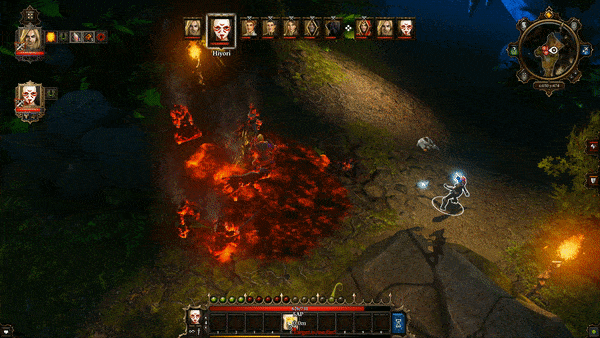
There's been a lot more critical discussion lately on D&D's conventions, especially due to the OGL. Many past D&D only people are branching out of the bubble and into the rest of the TTRPG hobby. It's not a new phenomenon--it's happened before. Back in the 2010s, when Apocalypse World came out while D&D was in its 4th Edition, grappling with Pathfinder. Grappling with its stringent GSL License (funny how circular this all is).
Anyway, all of that is just to put in the groundwork. My problem with D&D Violence (particularly, of the 3e, 4e, and 5e version) is that it's a violence that arises from "default fantasy". Default Fantasy is what comes to mind when you say fantasy: dragons, kings, medieval castles, knights, goblins, trolls. It's that fantasy cultivated by people who's played D&D and thus informs D&D. There is much to be said about the majority of this being an American Samsaric Cycle, and it being tied to the greater commodification agenda of Capitalism, but we won't go into that right now. Anyway, D&D Violence is boring. It thinks of fights in HITS and MISSES and DAMAGE PER SECOND.
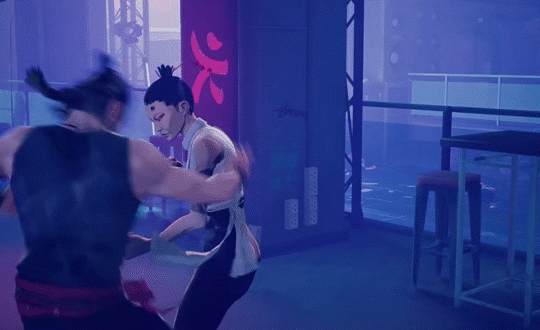
A Difference Of Paradigm and Philosophies
I believe this is because it stems from D&D still having one foot in the "grungy dungeon crawler" genre it wants to be and the "combat encounter balance MMO" it also wants to be. What ends up happening is that players play it like an immersive sim, finding ways to "cheese" encounters with spells, instead of interacting with the game as the fiction intended. This is exemplified in something like Baldur's Gate 3 for example: a lot of the strats that people love about it includes cheesing, shooting things before they have the chance to react, instead of doing an in-fiction brawl or fight to the death. It's a pragmatist way of approaching the game, and the mechanics of the game kind of reinforce it. People enjoy that approach, so that's good. I don't. Wuxia and Asian Martial Dramas aren't like that, for the most part.
It must be said that this is my paradigm: that the rules and mechanics of the game is what makes the fiction (that shared collective imagination that binds us, penetrates us) arise. A fiction that arises from a set of mechanics is dependent on those mechanics. There is no fiction that arises independently. This is why I commonly say that the mechanics are the narrative. Even if you try to play a game that completely ignores the rules--as is the case in many OSR games where rules elide--your fiction is still arising from shared cultural tropes, shared ideas, shared interests and consumed media.
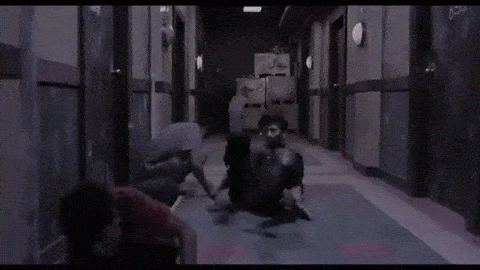
So for Gubat Banwa, the philosophy was this: when you spend a resource, something happens. This changes the entire battle state--thus changing the mechanics, thus changing the fiction. In a tactical game, very often, the mechanics are the fiction, barring the moments that you or your Umalagad (or both of you!) have honed creativity enough to take advantage of the fiction without mechanical crutches (ie., trying to justify that cold soup on the table can douse the flames on your Kadungganan if he runs across the table).
The other philosophy was this: we're designing fights that feel like kinetic high flying exchanges between fabled heroes and dirty fighters. In these genres, in these fictions, there was no "he attacked thrice, and one of these attacks missed". Every attack was a move forward.
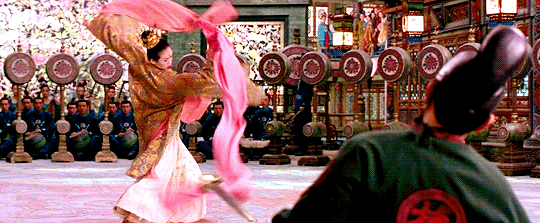
So Gubat Banwa removed itself from the To-Hit/Damage roll dichotomy. It sought to put itself outside of that paradigm, use game conventions and cultural rituals that exist outside of the current West-dominated space. For combat, I looked to Japanese RPGs for mechanical inspiration: in FINAL FANTASY TACTICS and TACTICS OGRE, missing was rare, and when you did miss it was because you didn't take advantage of your battlefield positioning or was using a kind of weapon that didn't work well against the target's armor. It existed as a fail state to encourage positioning and movement. In wuxia and silat films, fighters are constantly running across the environment and battlefield, trying to find good positioning so that they're not overwhelmed or so that they could have a hand up against the target.

The Violence Die: the Visceral Attacking Roll
Gubat Banwa has THE VIOLENCE DIE: this is the initial die or dice that you roll as part of a specific offensive technique.

In the above example, the Inflict Violence that belongs to the HEAVENSPEAR Discipline, the d8 is the Violence Die. When you roll this die, it can be modified by effects that affect the Violence Die specifically. This becomes an accuracy effect: the more accurate your attack, the more damage you deal against your target's Posture. Mas asintado, mas mapinsala.

You compare your Violence Die roll to your target's EVADE [EVD]. If you rolled equal to or lower than the target's EVD, they avoid that attack completely. There: we keep the tacticality of having to make sure your attack doesn't miss, but also EVD values are very low: often they're just 1, or 2. 4 is very often the highest it can go, and that's with significant investment.
If you rolled higher than that? Then you ignore EVD completely. If you rolled a 3 and the target's EVD was 2, then you deal 3 DMG + relevant modifiers to the DMG. When I wrote this, I had no conception of "removing the To-Hit Roll" or "Just rolling Damage Dice". To me this was the ATTACK, and all attacks wore down your target's capacity to defend themselves until they're completely open to a significant wound. In most fights, a single wound is more than enough to spell certain doom and put you out of the fight, which is the most important distinction here.
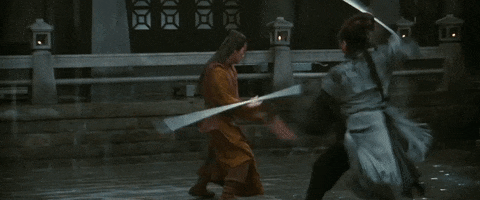
In the Thundering Spear example, that targets PARRY [PAR], representing it being blocked by physical means of acuity and quickness. Any damage brought about by the attack is directly reduced by the target's PAR. A means for the target to stay in the fight, actively defending.
But if the attack isn't outright EVADED, then they still suffer its effects. So the target of a Thundering Spear might have reduced the damage of an attack to just 1 (1 is minimum damage), they would still be thrown up to 3 tiles away. It matches that sort of, anime combat thing: they strike Goku, but Goku is still flung back. The game keeps going, the fight keeps going.

On Mechanical Weight
When you miss, the mechanical complexity immediately stops--if you miss, you don't do anything else. Move on. To the next Beat, the next Riff, the next Resound, think about where you could go to better your chances next time.
Otherwise, the attack's other parts are a lot more mechanically involved. If you don't miss: roll add your Attacking Prowess, add extra dice from buffs, roll an extra amount of dice representing battlefield positioning or perhaps other attacks you make, apply the effects of your attack, the statuses connected to your attack. It keeps going, and missing is rare, especially once you've learned the systematic intricacies of Gubat Banwa's THUNDERING TACTICS BATTLE SYSTEM.
So there was a lot of setup in the beginning of this post just to sort of contextualize what I was trying to say here. Gubat Banwa inherently arises from those traditions--as a 4e fan, I would be remiss to ignore that. However, the conclusion I wanted to come up to here is the fact that Gubat Banwa tries to step outside of the many conventions of that design due to that design inherently servicing the deliverance of a specific kind of combat fiction, one that isn't 100% conducive to the constantly exchanging attacks that Gubat Banwa tries to make arise in the imagination.
#gubat banwa#ttrpg#filipino#fantasy#gamedev#writing#rpg#dnd#southeast asia#d&d#d&d 5e#d&d 4e#i will say#that part of the decision away from a d20 (because gb alpha used one)#is sheer hater energy on my part#like i just didn't want to#because its used by all these other games by white people and especially because its used by dnd#there is like#4 instances where you use d20s in this game
226 notes
·
View notes
Text
from the yellow book of great house hlaalu, a house record dating from 3E 426:
King Hlaalu Athyn Llethan, High Councilor and Lord of Morrowind, grants relief to merchants complaining of high tariffs on imported alcoholic beverages.
The council is pleased to report a reduction in the incidence of theft and violent crime in the Hlaalu House Districts, thanks to the vigilance of the Legions and stern sentences by the magistrates. The council laments the unfortunate disturbances of the public peace resulting from the increasingly aggressive competition between the Thieves Guild and the Camonna Tong for control of the black markets.
A minor tax revolt in Balmora was suppressed without undue harm to life and property. The council sent deputations to the Duke to express their concerns over the high tax rates and the injurious effect of high tariffs on trade.
from the red book of great house redoran, a house record from the same year, commenting on the same circumstances:
King Hlaalu Athyn Llethan, High Councilor and Lord of Morrowind, imposes favorable tariffs on flin [an imported fortified Imperial alcoholic beverage]. The council protests the continuing burdensome tariffs on the native beverages sujamma, greef, and shein.
Smuggling and organized crime have become increasingly aggressive and violent in the Redoran House Districts. The councilors blame local corruption, weakened enforcement, and aggressive competition between the Thieves Guild and the Camonna Tong.
An unfortunate tax revolt in Balmora was put down after significant property damage and loss of life. The council warned that such disturbances might spread to Ald'ruhn if the heavy burden of Imperial taxes were not alleviated.
neatly characterizes both houses and their interests in a few short paragraphs
34 notes
·
View notes
Note
"Rollplay vs roleplay" started to be a big thing people talked about mostly with the advent of 3rd edition d&d and characters having social skills that you would roll for. Previously, although ad&d 2e included some mechanical use for charisma outside of "how many followers can be attracted," social interactions were generally acted out by the players, maybe using the stats of the character as a guide.
But when you could roll for "persuasion" or "deception," a chunk of players called that "roll-playing," based on the idea that if you could just roll to see how charming your character was, you weren't actually deciding anything about your character
Yeah, that's definitely when I personally started seeing the dichotomy pop up in those exact terms, and I do feel that 3e was the time it suddenly became a big, contentious topic within D&D. Like, as stated, the argument has been around for a long time, but I do think it entered the mainstream with 3e, since it was the big return of D&D to absolute market supremacy but also the one edition of D&D that codified social mechanics.
Anyway, it's really funny to me that the arguments that have been used to denigrate D&D in general have since become, like, a feature of D&D's internal community discourse. Like, we the players of the dungeon game feel very strongly about the fact that dungeons and combat are bad for roleplaying and there should be none of those in real roleplaying games,
24 notes
·
View notes
Text
@freeusemuses sent:
"Crazy Lust 3E: Kali knows that she shouldn't be doing this. Especially not to the leader of a clan of Goliath bandits ... but it just feels so good!"
Crazy Lust: 3E
They had come in overnight, absolutely ransacking the city. The guards had been unable to do little more than slow then down, before the half-giant brutes had started pillaging the market, smashing down doors, taking everything and anything of value or worth.
In the middle of all of this, their leader had chanced upon the Erotic Menagerie, and the exotic dancer that was its main attraction—and took her for himself.
Kali moaned, gasping as she gripped the fine sheets of her bed, biting her lip as she was pinned down. She could feel the Goliath war chief’s cock slamming hard and deep into her ass, pummeling up into her guts to reshape her, remold her into his perfect fuckdoll. It was so intense, so rough, and she should’ve felt disgusted being used like this—
“Mmm~ more~” she moaned out, rolling her head on the bedsheets to glance back at the towering bandit king. “Harder~ make me break~ fuck~ ruin me, big boy~”
—but she wasn’t. She’d never been more turned on, more utterly addicted, than she was in this moment, as this hulking figure of handsome and rugged domination loomed over her, smacked her face with his cock, shoved her down, and claimed that he was her owner now. She didn’t even put up a fight—a man as hot and aggressive as that, she knew she belonged with him.
She moaned as she felt his fingers suddenly tangle in her hair and shove her face down into the bedsheets, the steady clap of his hips on her ass becoming a thunderous cacophony as he plowed her fat ass harder, rougher, more wildly than before. Her delighted moans turned to a wanton scream, and her eyes rolled back as she bounced and twerked her fat and juicy ass into his thrusts, her mind melting with pleasure.
By the time dawn rolled over the city, the Goliath herd would all be gone—as was Kali Belladonna, the dark beauty of Erotic Menagerie, now the submissive and loyal wife and fuckpet of the herd’s leader.
#a twisted tale (nsft snippet)#a different sort of fairy tale (rwby au)#the lovely lady nightshade (kali belladonna)#you've met a terrible fate (bad ending)
5 notes
·
View notes
Text
IP Freely
One of the really interesting things about this WotC / OGL thing (if it ends up coming to pass), is how it exposes a way they’ve shot themselves in the foot. I mean, other than the obvious.
Since you can’t copyright game mechanics (though I’m sure they’ll try to sue everyone anyway), D&D has two things remaining: brand recognition, and IP.
Their brand recognition is going to be the real hurdle, because it’s stronger now than anytime in the past, really. They’re about as close to mainstream as they’ve ever been. They got a Chris Pine movie coming out. They’re in the “generic” phase of popularity, where “playing D&D” is shorthand for the entire tabletop experience in all but the minds of the nerdliest of nerds (I include myself in this group, Deadlands4Ever!).
I’m not sure surmounting the brand recognition is possible for any new game (at least not on a short time scale), which is where the battle is going to be fought. Pathfinder has the strongest play, probably, if they can survive the legal fees they’re about to be assailed with. Sounds like Kobold Press is making some moves, too, and more power to them. Good luck, everyone.
However, WotC could have had an enormous second weapon in their arsenal, one they’ve systematically dismantled since around 3rd edition: their IP. Nowadays, I doubt many new players know anything about the D&D IP, and I don’t mean that in a grognard / gatekeepy way. I mean, the company used 3rd, 4th, and much of 5th (with exceptions) to wipe their own IP away in the name of ease of use. Which obviously worked for them - they clearly have the new player base they were looking for.
But, believe it or not, D&D used to have big iconic characters. Elminster and Tanis Half-Elven and the Dragon of Tyr. Fiction books on the best seller list. Spinoff game lore books in the dozens about each setting, packaged in full boxes with maps. Branded video games that introduced huge groups of non-dice rollers to places like Baldur’s Gate and Sigil. They had a mainstream Saturday morning cartoon show, for chrissakes.
Somewhere around 3e, though (when WotC took over), they started to seem embarrassed of their own IP. They released fewer novels, they alienated their own authors. They stopped making campaign settings (leaving 3rd parties to occasionally do it, but with little support or marketing), letting Dragonlance, Spelljammer, PlaneScape, Dark Sun, and Ravenloft wither on the vine. Generic Fantasy World A and B became the primary setting (Greyhawk in name only for 3e, the wildly beige “Points of Light” setting for 4e).
They certainly stopped trying to make movies or cartoons with their IP. Video games set in D&D worlds became thin on the ground, mostly just a half-hearted MMO no one remembers.
Why wasn’t there a Drizzt movie or cartoon? According to Telegram, the character sold 35 million novels and was on the New York Times Best Seller list dozens of times.
5e tried to make a course-correction. In the rulebooks, you started to see names like “Bruenor Battlehammer” in rules examples instead of the generic “Tordek” and “Mialee.” Curse of Strahd was probably the strongest IP exercise, single-handedly resurrecting Ravenloft and one of the brand’s most iconic villains for millions of new players.
But even these attempts have been lacking any real teeth. Ravenloft eventually got an anemic “Van Richten’s Guide” fully five years after Curse of Strahd became popular, a book that lacked sufficient detail for a true campaign setting - or sufficient flavor to excite newcomers. Dark Sun remains on a shelf. Dragonlance only recently started getting attention, but even those books have been premade campaigns pretending to be campaign settings. Spelljammer is probably their most notable effort in 5e, which actually came with multiple setting books, probably a callback to the heyday of Spelljammer (when D&D loved introducing you to new worlds).
But this isn’t about campaign setting books, though that shit contributes.
It’s more that WotC spent the past two and a half decades making D&D as generic as humanly possible, without all of the flavor and characters of their most interesting settings, and burying all of their actually valuable IP.
And now that people are looking to jump ship, the company has nothing more than branding to lean on.
I hate to say “I told you so,” but, well, shit. Turns out all those cool stories and settings hundreds of people worked on and millions of people loved had some value or whatever.
#Wotc#wizards of the coast#d&d#dungeons and dragons#ogl#long ass posts#wow this is really long#raistlin rules
10 notes
·
View notes